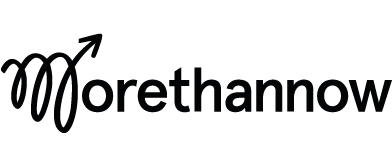Inclusive Moments - from good intent to meaningful progress.
Good intentions are not enough when it comes to workplace inequality. What we need are better tactics. We need to #ThinkSmall.
“There’s more rigour in the marketing department than the HR department”.
Professor Iris Bohnet at the Behavioural Approach to Diversity Conference.
An introduction to #ThinkSmall
Many of us aspire to healthy eating. But many also struggle to turn that intent into action. We falter in ‘high risk’ moments - watching Netflix on the sofa with a packet of biscuits, ambling past the pizza place on a Friday night and walking down the crisps aisle in Tesco. If you want a vision of a ‘healthier you’ to become reality, you need to design ways to nudge yourself away from those temptations. Maybe empty the snack draw before the next episode of Stranger Things? Maybe make a deal to ‘commitment-bundle’ that Friday-night pizza with a Saturday-morning run? Maybe buy the weekly shop online so you’re not lured in by the goodies aisle?
We need to think in the same way about inclusion. While I have a good understanding of bias and a desire to behave inclusively, neither will mean I will make equitable and meritocratic decisions from moment-to-moment. To follow through on my intent, I need to design safety-nets around me. It’s why, for example, we developed our entry-level recruitment process at MoreThanNow without asking for CV’s. Our blind applications are screened independently and our interview questions are carefully structured. Because these are moments of ‘high-risk’ where we would otherwise be liable to exclude and discriminate, regardless of our big vision or good intent.
#TestLearnAdapt
There are hundreds of inclusive moments you could focus on in the workplace. In your decisions about hiring, promotion and pay; in your meetings rooms and office corridors; in your away-days and after-work drinks. You can’t solve them all in one fell swoop, by convincing people how important they are with a ‘business case’ and rewiring their minds with diversity and unconscious bias training. You need safety-nets….
“Stay focused on the facts, use an inclusive and empathetic lens, collect and pay attention to data, and experiment”.
Rony Hacohen, Behavioural Insights Team
Identifying your highest priority moments is a difficult task. Data and empathy are not mutually exclusive; neither are facts and stories. Your job is to gather and weigh diverse inputs, and make a judgement on where to spend your time and attention:
What priorities do your stakeholders value?
Where does your internal data point to bias or adverse impact?
Where does academic literature highlight high-risk moments of exclusion?
What feedback, stories and experiences have you gathered from your employees, especially from those whose voices are underrepresented and who are at greatest risk of discrimination?
You can start big and drill down - ‘what moments stop our talented women getting to our leadership roles?’, or you can concentrate on more precise issues revealed by data - ‘why do our assessors rate BAME candidates lower than non-BAME candidates in our graduate assessment centre?’. Once you have a focus, everything else falls into place - you choose a measure for your moment, you design an intervention to influence that outcome and you test its effect with a robust randomised controlled experiment.
This iterative approach isn’t easy or short-term and it requires some technical expertise. But it’s how we can all begin to contribute to an understanding of what works and what doesn’t. By testing, learning and adapting our way to meaningful progress.
Thank you for reading. MoreThanNow apply a #ThinkSmall approach to inclusion in some of the most progressive organisations in the UK, including Ericsson, Unilever, BT and Transport for London. Please get in touch below if you would like to explore opportunities to work together:


